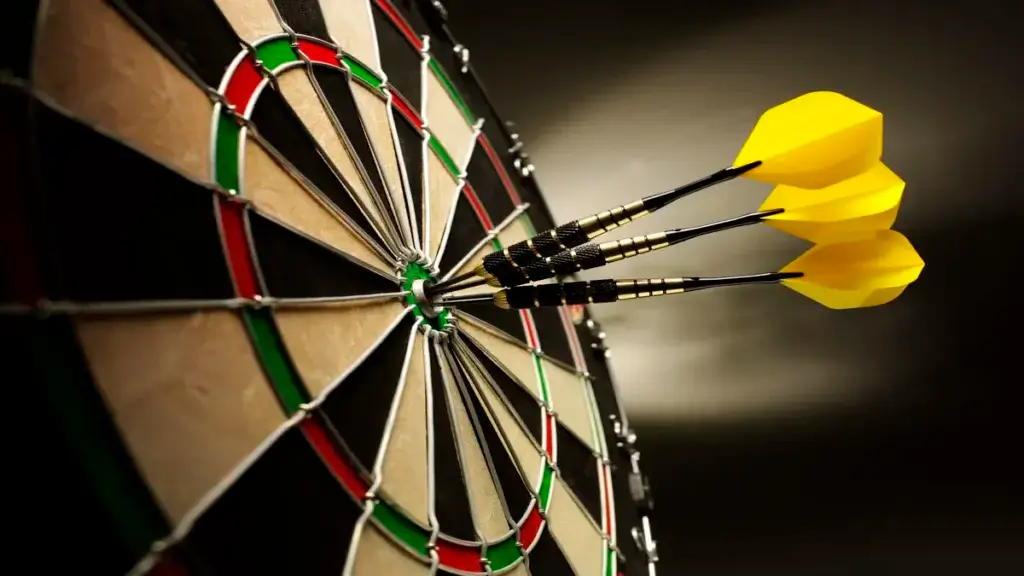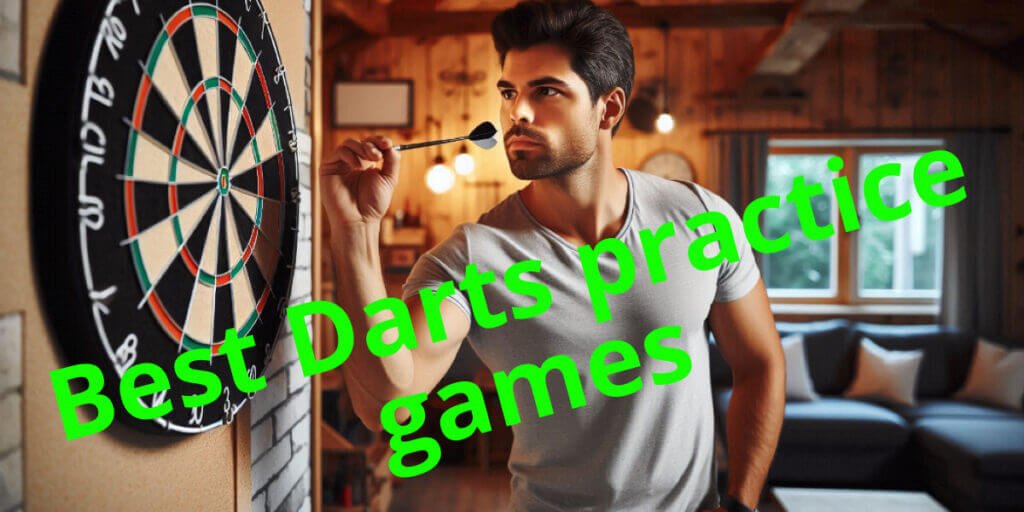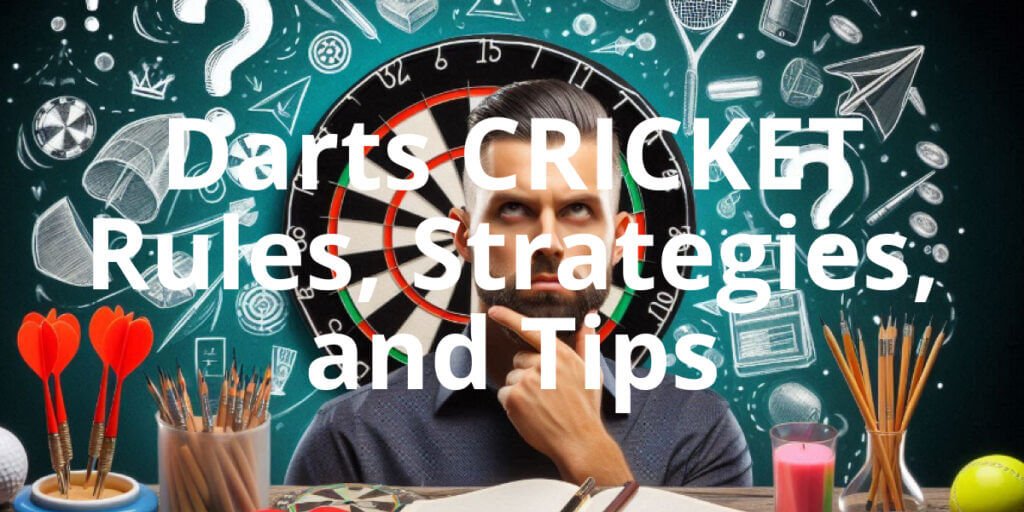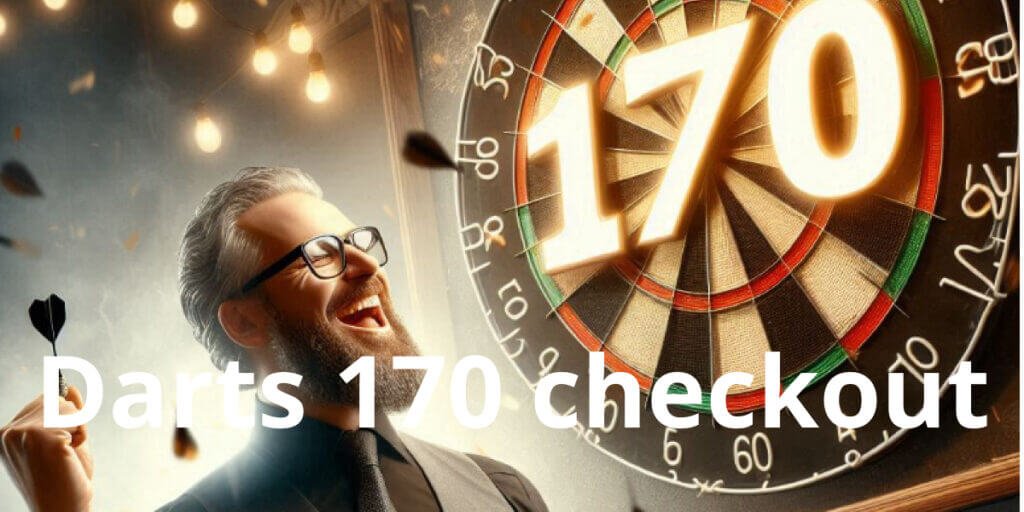Darts is a game of precision, strategy, and quick decision-making. As players progress in their skills, understanding when to aim for the bullseye versus specific numbers becomes crucial for maximizing scores and securing victories. This article will explore the various darts checkout strategies players can employ, helping both beginners and experienced darts enthusiasts sharpen their approach to the oche.
We’ll delve into the intricacies of different checkout scenarios, mathematical calculations, and strategic considerations that can elevate your darts game.
1. Understanding Checkouts in Darts
In darts, a “checkout” refers to the final series of darts a player throws to reach zero from a starting score, typically 501 in professional play. The goal is to finish on a double, which is the outer ring of the dartboard. For example, if a player has 40 left, they need to hit a double 20 to win the game.
Having a solid checkout strategy is essential for winning games. Understanding which numbers to aim for, when to go for the bullseye, and how to manage your scoring can make a significant difference, especially in tight matches. Effective checkout strategies can help players capitalize on their strengths while minimizing potential mistakes.
2. The Basics of Checkout Strategy
The Mathematics of Checkouts
Understanding the mathematics behind checkouts is vital. Players must be aware of how to calculate the most efficient way to reach zero. Here’s a brief overview:
- Know Your Numbers: Familiarize yourself with the most common checkouts for scores ranging from 40 to 170.
- Doubles and Triples: Remember that the outer ring of the dartboard represents doubles, while the inner ring represents triples. For instance, hitting a triple 20 scores 60 points, while hitting a double 20 scores 40 points.
- Using the Bullseye: The bullseye (50 points) can be a strategic option for certain checkouts, especially when closing out games.
Basic Checkout Table
Here’s a basic checkout table to give you an idea of common checkouts from various scores:
| Score | Checkout |
|---|---|
| 170 | T20, T20, Bull |
| 167 | T20, T19, Bull |
| 164 | T20, T18, Bull |
| 161 | T20, T17, Bull |
| 160 | T20, T20, D20 |
| 150 | T20, T20, D15 |
| 140 | T20, T20, D10 |
| 130 | T20, T20, D5 |
| 120 | T20, T20, D6 |
| 100 | T20, D20 |
| 80 | T20, D10 |
| 40 | D20 |
| 32 | D16 |
| 24 | D12 |
Using the Table
When you have a specific score left, refer to this table to determine the best way to finish. For example, if you have 100 left, the most efficient way is to aim for a triple 20 and then double 20.

3. When to Aim for the Bullseye
High-Scoring Scenarios
The bullseye can be an advantageous target in certain scenarios, especially when you’re looking to score high and set yourself up for an easier checkout. Here are some scenarios where aiming for the bullseye is beneficial:
- Checkout of 50 or Less: When you have 50 points left, hitting the bullseye is the most efficient way to finish the game.
- Setting Up for High Scores: If you’re in a high-scoring game and looking to put pressure on your opponent, aiming for the bull can yield significant points quickly.
Pros of Aiming for the Bull
- High Reward: The bullseye scores 50 points, making it an attractive target when you need to reduce your score rapidly.
- Confidence Boost: Successfully hitting the bullseye can provide a psychological boost, increasing your confidence for subsequent throws.
Cons of Aiming for the Bull
- Risk of Miss: The bullseye is smaller than many of the number segments, which can lead to higher chances of missing and potentially wasting darts.
- Limited Checkout Options: Aiming for the bull can restrict your checkout options if you miss, leaving you with fewer points to finish the game.
4. When to Aim for Specific Numbers
Strategic Scenarios
While the bullseye can be advantageous, there are many scenarios where aiming for specific numbers is the smarter play:
- Scoring Doubles: If you have a score that can be finished with a double, it’s usually better to aim for that double rather than the bull.
- Leaving a Manageable Score: If you’re approaching the end of the game and have a score that is difficult to finish, aim for numbers that leave you with a better checkout next round.
Pros of Aiming for Specific Numbers
- Higher Checkout Probability: Many numbers on the board can lead to more consistent checkouts, especially when you’re accustomed to specific segments.
- Flexibility: Aiming for numbers allows for a broader range of checkout options, making it easier to recover from a missed throw.
Cons of Aiming for Specific Numbers
- Lower Immediate Reward: Depending on the score you are trying to reach, specific numbers may not provide the high points available with the bullseye.
- Requires More Precision: Some players may find that certain numbers are more difficult to hit consistently, leading to frustration.
5. Checkout Strategies Based on Scores
Scores 60 and Below
When your score is 60 or lower, it’s essential to focus on hitting doubles:
- 40: Aim for double 20.
- 32: Aim for double 16.
- 24: Aim for double 12.
- etc
In these scenarios, the bullseye is not an option as you can directly finish on a double.
Scores Between 61 and 120
For scores between 61 and 120, you have various checkout options:
- 100: Aim for a T20, then D20.
- 80: Aim for a T20, then D10.
- 70: Aim for a T20, then if you hit you have double 5 left, if you miss and hit a single 20 you can try to end with the bullseye.
This range allows for a mix of bullseye and number strategies.
Scores 121 and Above
When your score is 121 or higher, focusing on triples becomes essential for maximizing your chances of finishing:
- 170: Aim for T20, T20, Bull.
- 160: Aim for T20, T20, D20.
- 150: Aim for T20, T20, D15 OR if you feel confident, go for triple bullseye to show-off.
These high scores often necessitate a focus on the bullseye for finishing, but they also allow for various strategic numbers along the way.

6. Practical Tips for Checkout Success
The key to mastering checkout strategies lies in consistent practice. Spend time focusing on specific numbers and the bullseye. Use practice routines that simulate match conditions to improve your accuracy under pressure.
Keep a record of your practice sessions, noting which numbers you hit successfully and where you struggle. This can help you identify areas needing improvement and adjust your strategy accordingly.
Regularly competing against other players can enhance your decision-making skills during matches. Pay attention to their checkout strategies and learn from their successes and mistakes.
Conclusion
Darts checkout strategies are fundamental for players looking to elevate their game. Understanding when to aim for the bull versus specific numbers can significantly impact your performance, whether you’re playing for fun or competing at a high level. By practicing your aiming techniques, tracking your progress, and learning from each game, you can master the art of checkout and become a formidable opponent on the oche. Remember, darts is not just about skill; it’s also about strategy, and with the right approach, you can improve your game and enjoy the process along the way.





